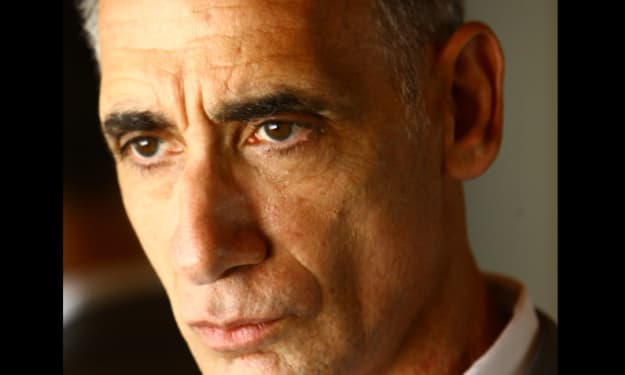The Visual Language of 'A Star Is Born'
'The Hangover' guy really knows how to direct a movie.
Bradley Cooper is the surprise of the season with his remarkable direction of A Star Is Born. The challenge he set for himself on his first time out behind the camera was daunting to say the least. Not only is Cooper directing himself in the lead role, he’s directing a non-actress, Lady Gaga, in the other lead role. He also had massive logistics to tend to with crowds, music, and stadiums where conditions—we can easily imagine—that were not always conducive to a director desperately trying to capture a needed moment.
And yet, Cooper makes it work rather brilliantly. The tone is a masterful mix of heady romance and melancholy, much like a great ballad. The look of the film is bright and welcoming, pleasing to the eyes, even as the story begins to go to dark places. The supporting characters were chosen with tremendous care with an eye focused only toward those who can further the characters and the plot; no extraneous extras going into business for themselves.
Beyond the mass of A Star Is Born, however, is Cooper’s remarkable talent for capturing small moments that many first-time filmmakers, or even veteran filmmakers, miss out on. Take for instance a scene when Ally (Lady Gaga) meets Jack (Cooper) for the first time. Not the first time they talk, although that is a terrific scene as well, no the first time they lock eyes. It’s a brief moment, but when Ally turns her head and looks at Jack, and he at her, the chemistry is electric and the moment is reminiscent of Cameron Crowe at his romantic best.
This next part is going to get into spoilers, so if you have yet to see A Star Is Born, go ahead and see it then come back for the rest of this article, because the scenes that demonstrate Bradley Cooper’s seemingly innate talent for the language of film come near the very end of the film. These are images so subtle and yet so direct that they tell a million more stories as they are telling one. These are images so strong they could be taught in film schools.
Spoilers Ahead
In the aftermath of an epic, drunken meltdown at the Grammy’s, as well as a very public trip to rehab, Jackson returns home looking to resume life with his wife, Ally. Unfortunately, she’s about to go on tour and her manager, Rez Gavron, doesn’t want Jack going with her. In a scene of stunning insensitivity, Gavron’s weaselly manager tells Jack that he nearly ended Ally’s career and that she can’t be seen in public with him without risking complete humiliation.
It’s one of the weaker part of the narrative of A Star Is Born, Gavron’s character is the only functionary character in the movie (i.e a device rather than full-fledged character, but it gets us where we need to be). This scene takes us to Jackson’s devastating final moments when, overcome with grief and shame, Jackson consumes the last of his illicit station of opioids and goes into his garage with the aim of taking his life.
This is a masterful sequence. No words are spoken, there is no voiceover for a suicide note—the kind of hack trope other directors would use for false emotion—just the sight of Jackson stumbling out of his truck, the pills he failed to get into his mouth spilling to the ground. The camera remains at Jackson’s waist and we see, in his hand, a belt. A belt is how Jackson’s father had ended his life when Jackson was 12.
Here Cooper slows things down. He’s assessing the garage as he’s looking for the strongest point in the ceiling. We in the audience are silently begging him not to do this. He takes a few more steps, the camera is still at waist height. The camera holds for a moment on a table next to a wall. Slowly, Jackson’s hat comes into the frame, he’s removed it, placing it carefully on the table. The hat evokes memories for us of Ally wearing it as she got off the bus laughing with the two in the throes of early love.
After a lengthy wait, the camera pulls back outside the garage and we see Jackson’s face. He takes a quick look out the door with his hand on the door. With a sudden and careless crash he brings the door down and his fate is sealed. As a final, visual coda to this moment, Jackson and Ally’s beloved dog, Charlie, walks into the frame and after offering a weak sigh, lays down in front of the garage to bear silent witness.
After a cut to a concerned Ally who was waiting for Jackson to join her on stage at the Los Angeles Forum, we cut back to their home bathed in rotating red and blue police lights. Jackson has been found dead. We knew that already, but something about those lights, the darkness, the slow push in of Cooper’s camera through a small growth of trees toward the front door—this visual indicator is somehow more powerful than if we'd actually seen Jackson’s body.
Visual storytelling is usually something that a director needs time to develop, but Bradley Cooper has already picked it up to a remarkable degree. The powerful ending isn’t the only time, but it is the best example of Cooper’s surprising strength. We assume that when an actor turns director that they will be biased toward giving their actors a showcase above all else. That has been the curse of many similar actors turned directors. Cooper, however, biases toward the story above all and relies on his actors and technicians to rise to meet the quality of that story.
The visual storytelling of A Star Is Born is the proof that his approach worked. He’s managed to craft a movie that any director would be proud to call their own and he’s done it on his first try. Cooper has gone from a guy from The Hangover to a genuine auteur in one feature film. It’s a stunning first effort and announces Cooper as a director to watch for in the years to come, on top of being a box office draw as the leading man. And he’s handsome too, I’m starting to hate him.
About the Creator
Sean Patrick
Hello, my name is Sean Patrick He/Him, and I am a film critic and podcast host for the I Hate Critics Movie Review Podcast I am a voting member of the Critics Choice Association, the group behind the annual Critics Choice Awards.







Comments
There are no comments for this story
Be the first to respond and start the conversation.